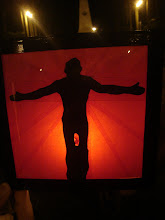Hindi maaring sabihing isolated case lamang ito, sapagkat ang bilang ng mga enrolees na mismo ang magsasabi sa kagipitang dulot ng TOFI. At sa gitna ng pagsasabatas ng bagong UP Charter, ano pa ang maasahan ng iba pang mahihirap ngunit may katalinuhang makapasok sa UP. Sinasabi ni Prop. Winnie Monsod na marapat lang na saluhin ng mga mayayaman ang tuition fee ng mga mahihirap,ngunit kung tutuusin, bakit ba marami na ang mayayaman sa UP kumpara sa mga mahihirap na estudyante? Malinaw na repleksyon ito na hindi na afford o kayang tustusan ng isang ordinaryong pamilya ang pagpapa-aral sa UP. Lalo na yung mula sa mga probinsya. Kung sa ngalan ng pantay na akses sa edukasyon ay mas maraming mahihirap ang di makatamasa ng edukasyong UP, anupa't na ging state university, at ngayon national university ito.
Ang kaso ng batang tinukoy sa ibaba, ay isang kwento ng pag-asang huwad. Tumpak ang pagsasalarawan na parang nanalo siya sa lotto ng pumasa sa UPCAT, ngunit di nakamit ang premyo dahil sa walang downpayment. Sa muli't-muli, ang realidad na ito patunay sa ipinagmamayabang ng gobyerno, sa kasong ito, ramdam mo ang KAHIRAPAN!
ni Prof. Noli Reyes
On the third day of classes in the hundredth year of the University of the Philippines (UP), a freshman from Cotabato province, a Chemistry major at UP in Diliman, Quezon City, had to drop out. Together with his father, the brokenhearted young man went to see each of his instructors to have his subjects invalidated.
While his Math 17 instructor was deleting his name from the class list, I could see the poverty, desperation, anger and sense of resignation in their faces. It was not the disappointment of winning the lottery and being denied the prize later. The young man is a member of a minority group in Mindanao. Without any connections and in the absence of any socialized admission policy, he qualified as a freshman in the College of Science of UP Diliman, a distinction he earned through intelligence, pure hard work and perseverance amid poverty. But in a few days, father and son are going back to Mindanao for good.
The father explained they could not afford the “socialized” tuition at P600 per unit for students in Bracket C, families whose annual incomes range from P135,001 to P500,000 per annum. The father and son expected to be in Bracket D, families with annual incomes ranging from P80,001 to P135,000. Students in bracket D pay P300 per unit.
UP president Emerlinda Roman seems to be disconnected from reality, or she must be fooling herself by insisting that the new Socialized Tuition and Financial Assistance Program (STFAP) is fair and proper for an “iskolar ng bayan” [scholar of the nation]. Her family should try living on P6,666.75 a month (which when multiplied by 12—the number of months in a year—equals P80,001, the lower bound of Bracket D incomes).
UP, no longer conscious of its role in society, chooses to ignore the long-term impact of offering greater genuine educational opportunities to the brightest among the poor, who are getting poorer amid the reported economic gains of the country. Socialized admission and tuition fee schemes do not lower academic standards. I’ve had countless students from public schools and far-flung provinces. They come to UP not as well prepared as their counterparts from the best schools in Metro Manila. But many later outshine the sometimes overconfident Manila-raised kids.
After the new STFAP took effect last year, UP is no longer an option for the brightest among the poor. I agree with the cab driver whose daughter qualified for UP Diliman, as narrated in Youngblood (Inquirer, 3/24/08) by Mariel Kierulf Asiddao, a UP Mass Communication student. The cab driver insisted it was ESTIFAK and not STFAP.
NOLI N. REYES, professor, Institute of Mathematics, University of the Philippines, Diliman, Quezon City


No comments:
Post a Comment